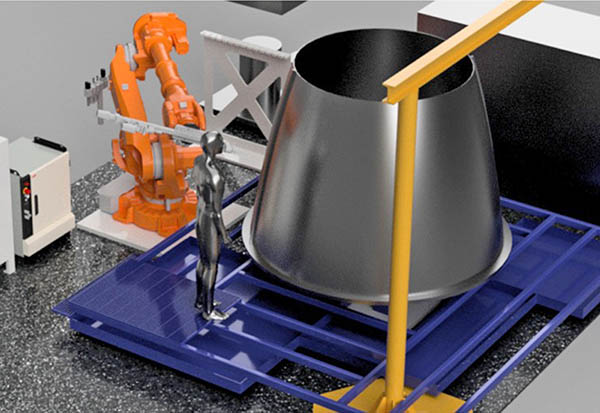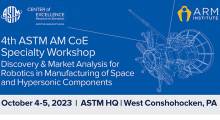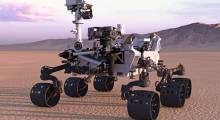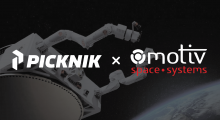Beaumont Machine this week announced that it is supplying a small-hole machine with robotic articulation to SpaceX. The Batavia, Ohio-based company has provided fast-hole and small-hole electrical discharge machines to the aerospace industry for more than 20 years.
“As the needs in the industry are changing, we’ve made changes to keep pace,” said Ed Beaumont, president of Beaumont Machine. “For the past three years, Beaumont Machine has been working with the advanced CNC systems from Siemens to support the real-time connection to our power supply. This has improved our hole shape technology, breakthrough rate, and overall holemaking process quality.”
The company's customers include Lockheed Martin, Pratt & Whitney, and General Electric. It said it has built equipment as small as a phone booth and as large as this newest SpaceX collaboration.
Beaumont Machine expands with ABB
“We just completed a project with SpaceX, using this newly developed control system in tandem with integrated large ABB robotics for positioning of the electrode,” said Beaumont.
The new Beaumont small-hole electrical discharge machine (EDM) at SpaceX in Hawthorne, Calif., has a reach of 8 ft. (2.4 m) in diameter and 8 ft. in height. EDM machines use thermal energy rather than cutting tools to precisely shape materials such as titanium.
“All our machines are built for production purposes, right here in Southwest Ohio,” said Beaumont. “Our customers demand the uptime we provide as well as preventative and predictive maintenance programs with NADCAP-approved calibrations.”
“Beaumont equipment, built for the long haul on the strength of our 22-year experience and machines operating in eight countries, are still in production and still holding tight aerospace tolerances,” he said.
The company said it welcomes all challenges from the aerospace industry for small-hole EDM and robotic articulation.
SpaceX relies on robots
SpaceX has used several other robots in its development of commercial space travel. For example, its Falcon 9 Securing Robot, also known as “Octagrabber,” is a tracked robot with four arms that secures a droneship to a booster rocket. The company has launched three autonomous ships to retrieve Falcon 9 boosters at sea.
In addition, SpaceX used a Spot quadruped from Boston Dynamics named “Zeus” to collect data at its test site in Boca Chica, Texas. In March, Zeus was used to inspect the site of a failed Starship prototype landing.
In August, SpaceX brought a robotic arm developed by Gitai Inc. to the International Space Station. The S1 arm is designed to help astronauts with scientific experiments. Tokyo-based Gitai had raised $17.1 million in Series B funding in February.
Last month, CEO Elon Musk said that SpaceX is developing “robot chopsticks” to recover its Super Heavy booster rocket.
Article topics
Email Sign Up



















